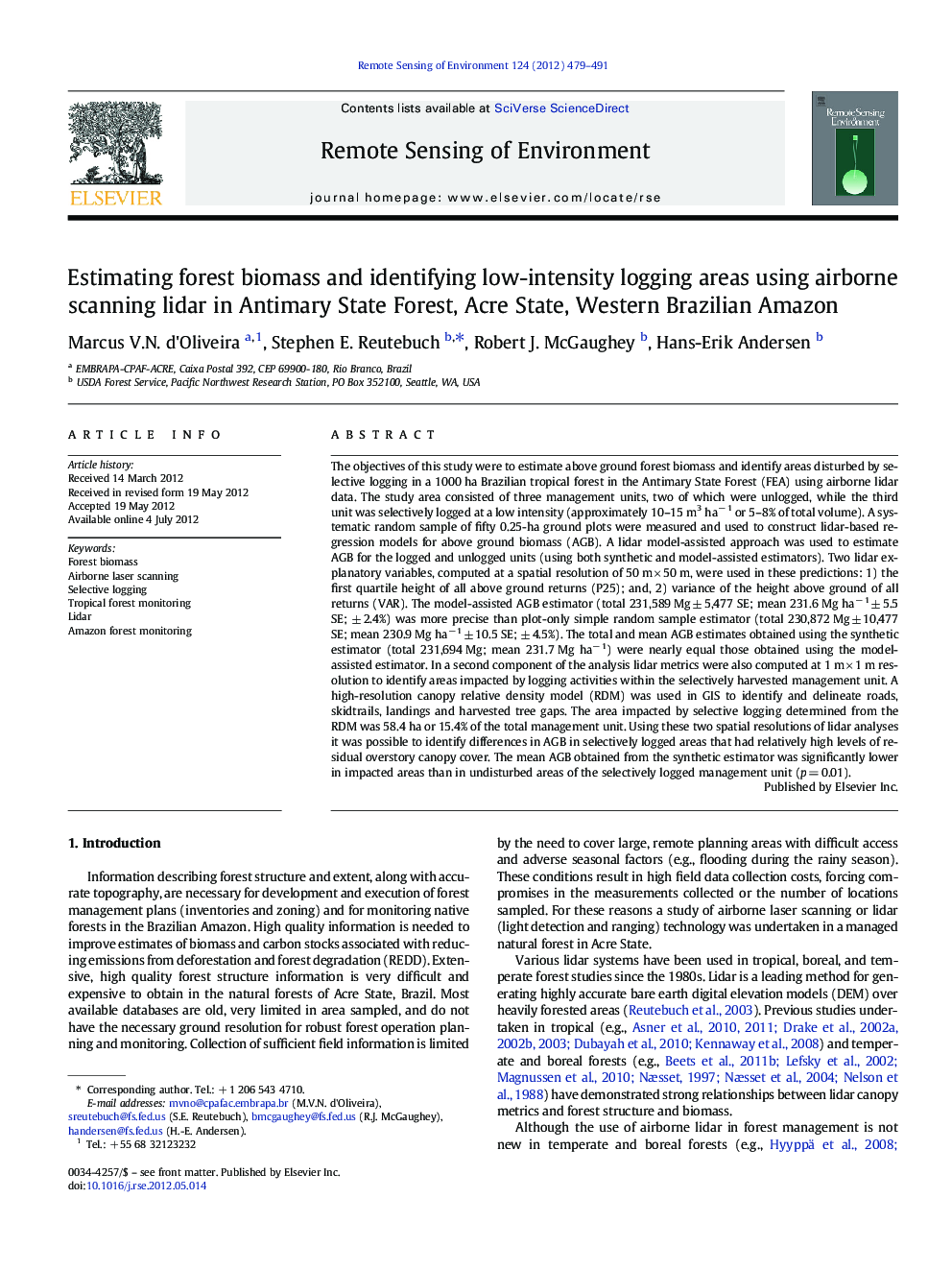| کد مقاله | کد نشریه | سال انتشار | مقاله انگلیسی | نسخه تمام متن |
|---|---|---|---|---|
| 4459023 | 1621276 | 2012 | 13 صفحه PDF | دانلود رایگان |

The objectives of this study were to estimate above ground forest biomass and identify areas disturbed by selective logging in a 1000 ha Brazilian tropical forest in the Antimary State Forest (FEA) using airborne lidar data. The study area consisted of three management units, two of which were unlogged, while the third unit was selectively logged at a low intensity (approximately 10–15 m3 ha− 1 or 5–8% of total volume). A systematic random sample of fifty 0.25-ha ground plots were measured and used to construct lidar-based regression models for above ground biomass (AGB). A lidar model-assisted approach was used to estimate AGB for the logged and unlogged units (using both synthetic and model-assisted estimators). Two lidar explanatory variables, computed at a spatial resolution of 50 m × 50 m, were used in these predictions: 1) the first quartile height of all above ground returns (P25); and, 2) variance of the height above ground of all returns (VAR). The model-assisted AGB estimator (total 231,589 Mg ± 5,477 SE; mean 231.6 Mg ha− 1 ± 5.5 SE; ± 2.4%) was more precise than plot-only simple random sample estimator (total 230,872 Mg ± 10,477 SE; mean 230.9 Mg ha− 1 ± 10.5 SE; ± 4.5%). The total and mean AGB estimates obtained using the synthetic estimator (total 231,694 Mg; mean 231.7 Mg ha− 1) were nearly equal those obtained using the model-assisted estimator. In a second component of the analysis lidar metrics were also computed at 1 m × 1 m resolution to identify areas impacted by logging activities within the selectively harvested management unit. A high-resolution canopy relative density model (RDM) was used in GIS to identify and delineate roads, skidtrails, landings and harvested tree gaps. The area impacted by selective logging determined from the RDM was 58.4 ha or 15.4% of the total management unit. Using these two spatial resolutions of lidar analyses it was possible to identify differences in AGB in selectively logged areas that had relatively high levels of residual overstory canopy cover. The mean AGB obtained from the synthetic estimator was significantly lower in impacted areas than in undisturbed areas of the selectively logged management unit (p = 0.01).
► Lidar was used to improve estimates of biomass in a managed Amazon forest.
► Selective logging in a managed Amazon forest was successfully mapped with lidar data.
► Lidar can be used to monitor low-intensity, selective logging in tropical forests.
Journal: Remote Sensing of Environment - Volume 124, September 2012, Pages 479–491